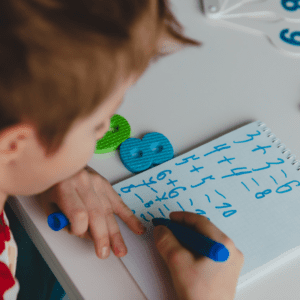Imagine individuals struggling to grasp even the most basic mathematical concepts, feeling lost and frustrated as numbers dance around on the page, refusing to make sense. This is the daily reality for those with dyscalculia, a learning disorder that profoundly impacts millions of lives but often remains in the shadows. While dyslexia often takes the spotlight in discussions of learning differences, dyscalculia quietly affects individuals’ abilities to understand and manipulate numbers, yet it remains relatively unknown and misunderstood. It’s time to shine a light on dyscalculia and explore the challenges faced by those living with this often-overlooked condition.

Why We Don’t Know More
Historically, education has placed a stronger emphasis on literacy and reading skills compared to numeracy and math skills. As a result, dyslexia, which primarily affects reading and language abilities, has received more attention and resources than dyscalculia. The amount of research and studies on dyslexia far exceeds those on dyscalculia. Due to this fact, there’s generally more awareness among educators, parents, and the general public about dyslexia and its symptoms, leading to earlier identification and intervention. Moreover, dyscalculia can be harder to diagnose than dyslexia because its symptoms are not as well-defined and can overlap with other learning difficulties or math-related challenges. This diagnostic complexity can contribute to underidentification and underreporting of dyscalculia cases.

Identifying Characteristics of Dyscalculia
Several tools and assessments can diagnose characteristics of dyscalculia. Various standardized tests, such as the WIAT-III (Wechsler Individual Achievement Test) or the Woodcock-Johnson Tests of Achievement, include sections that assess mathematical skills. Discrepancies between mathematical abilities and other areas of cognitive functioning may indicate dyscalculia. Additionally, there are specific screening tools designed to identify dyscalculia, such as the Dyscalculia Screener or the TEDI-MATH (Test of Early Mathematics Ability). These tools are often used in the educational setting to screen for difficulties in mathematical skills. Teachers who work closely with students can observe their mathematical abilities in various contexts. Using checklists or observation forms specifically designed to assess mathematical skill and behaviors associated with dyscalculia can provide valuable information for diagnosis. A new brief resource to screen for characteristics of dyscalculia that is showing great promise is the DySc (Dyscalculia Screener). It is important to note that a comprehensive assessment for dyscalculia typically involves a combination of these tools and assessments, along with input from teachers, parents, and other professionals who work with the individual. Additionally, assessments should be conducted by qualified professionals trained in diagnosing learning disorders.

Supporting Students with Dyscalculia
Multi-sensory Learning: Incorporate multisensory learning techniques into math instruction. Use manipulatives, such as blocks, counters, or beads, to represent mathematical concepts visually and physically. Encourage students to use tactile and kinesthetic methods to explore and understand mathematical concepts, which can help reinforce learning and improve retention.
Visual Aids and Graphic Organizers: Provide visual aids and graphic organizers to support understanding and organization of mathematical information. Use visual representations, such as diagrams, charts, and number lines, to illustrate mathematical concepts and relationships. Break down complex problems into smaller, more manageable steps using visual organizers like flowcharts or graphic organizers.
Structured and Explicit Instruction: Provide structured and explicit instruction that breaks down mathematical concepts into clear, step-by-step instructions. Present information in a systematic and sequential manner, highlighting key concepts and vocabulary. Offer ample opportunities for guided practice and reinforcement to ensure comprehension.
Chunking and Repetition: Break down mathematical tasks into smaller chunks or steps to reduce cognitive load and prevent overwhelm. Teach students strategies for organizing and chunking information, such as using mnemonics, acronyms, or memory aids. Provide frequent opportunities for practice and repetition to reinforce learning and build fluency in mathematical skills.
Flexible Assessment and Accommodations: Offer flexible assessment options and accommodations to accommodate the individual needs of students with dyscalculia. Allow alternative methods for demonstrating understanding, such as verbal explanations, written responses, or hands-on demonstrations. Provide extra time, use of manipulatives, or assistive technology tools, such as calculators or math apps, to support students during assessments and classroom activities.
Raising awareness about dyscalculia is crucial for understanding and addressing the unique challenges faced by individuals with this often-overlooked learning disorder. While dyslexia has received more attention in discussions of learning differences, dyscalculia remains relatively unknown and misunderstood. By shining a light on dyscalculia, we can begin to bridge the gap in understanding and support for those living with this condition. Through early identification, comprehensive assessment, and targeted interventions, educators and professionals can provide the necessary support and accommodations to help students with dyscalculia thrive academically and build confidence in their mathematical abilities. By implementing strategies such as multisensory learning, visual aids, structured instruction, chunking, and flexible assessment, educators can create an inclusive learning environment that meets the diverse needs of all students, including those with dyscalculia. Together, let us continue to advocate for greater awareness, resources, and support for individuals with dyscalculia
